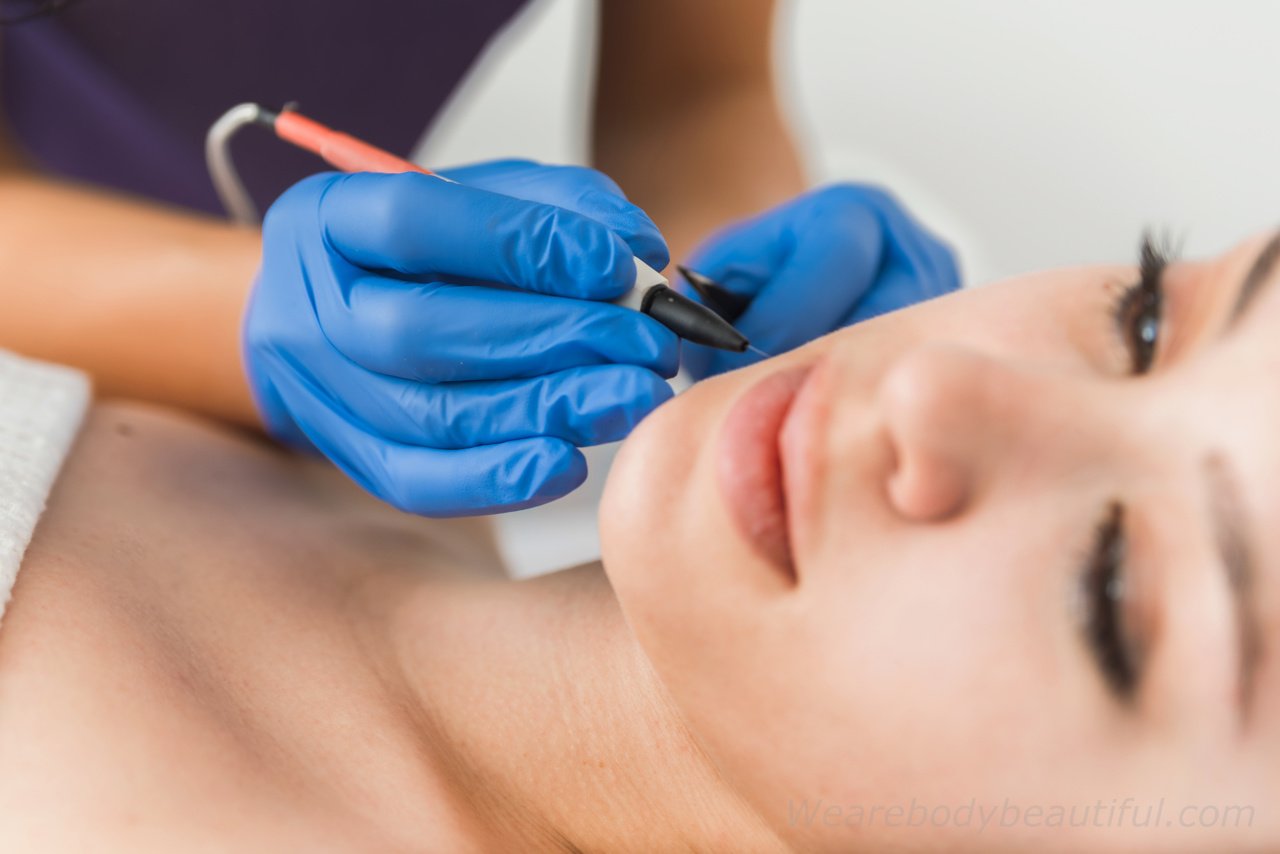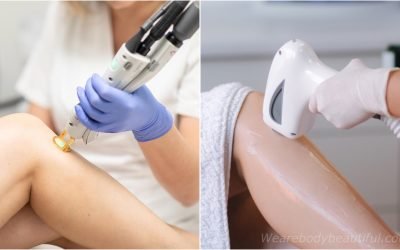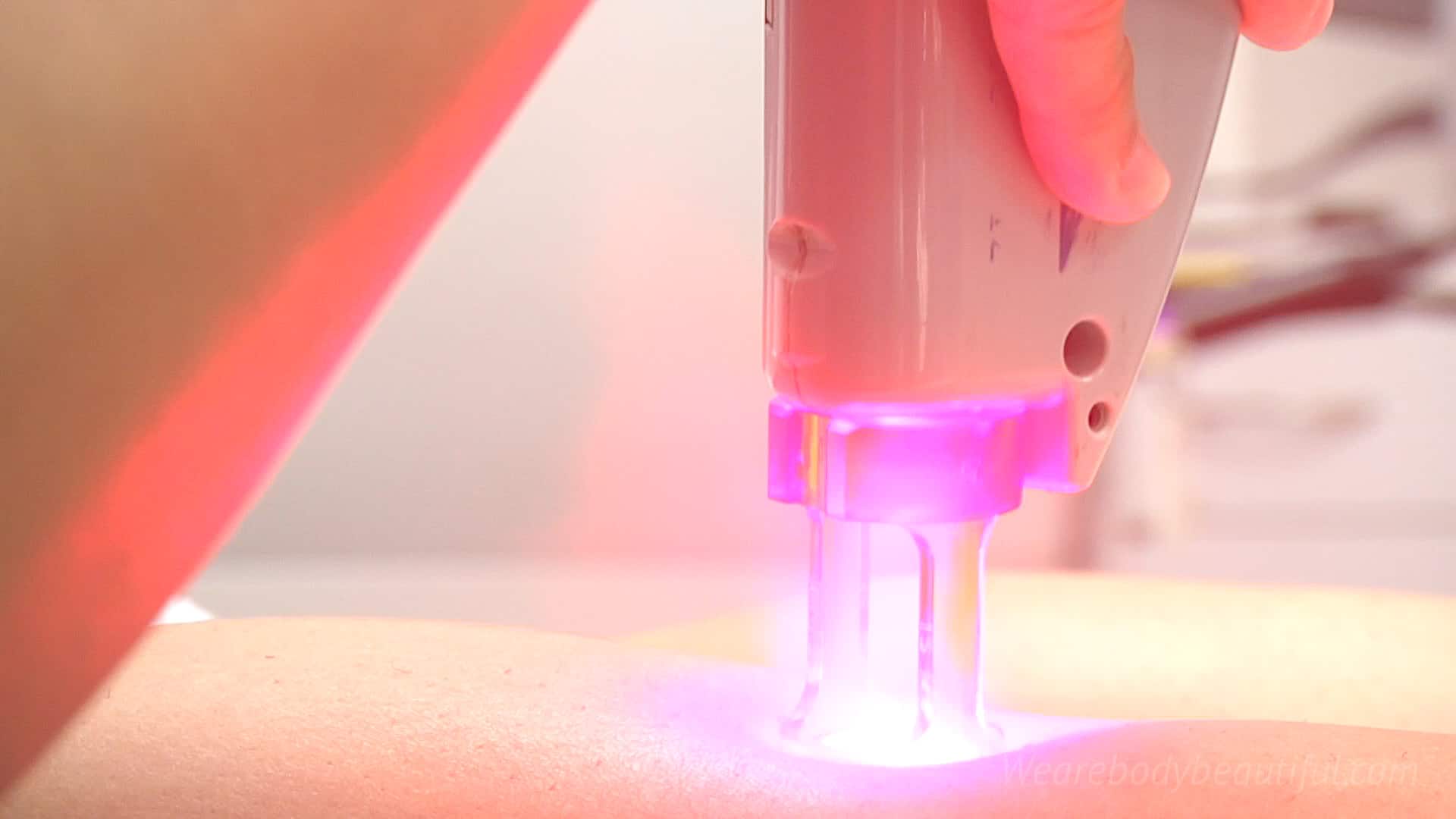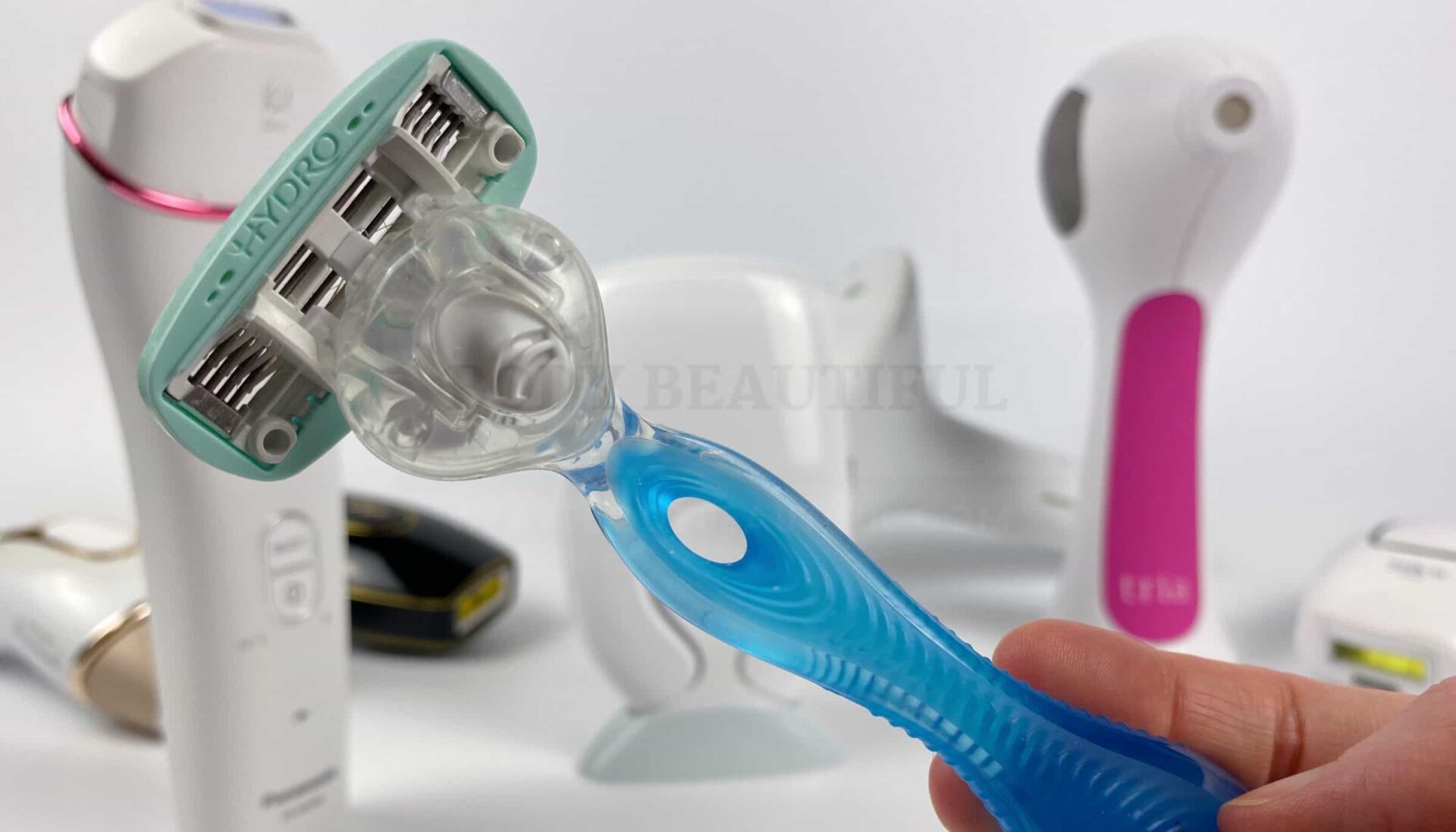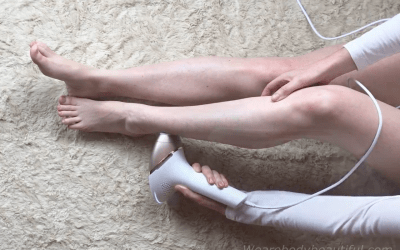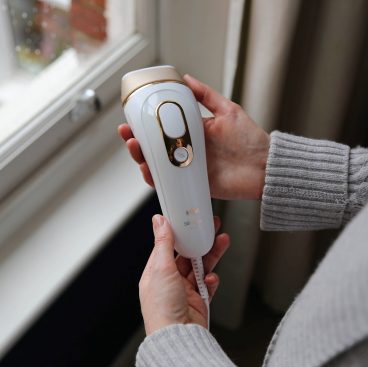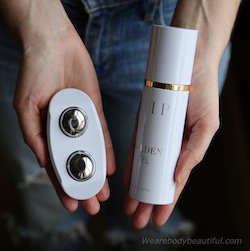Do a Google search for “permanent hair removal” and you’ll likely see a few Shopping Ads for at-home devices, some local listings for laser hair removal services near you, and a bunch of articles and videos about laser hair removal. So, to the question ‘is laser hair removal permanent?’ you think yeah – it gives permanent results, right?
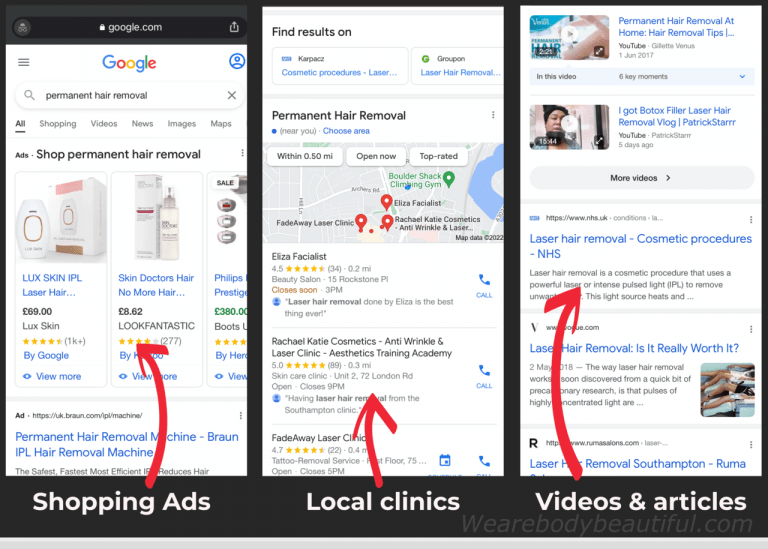
Well, in this instance Google hasn’t quite got it quite right.
Laser and IPL hair removal was dubbed permanent hair removal a few years back. But it’s not true. In fact, in the USA, the FDA won’t allow laser and IPL manufacturers to promote permanent hair removal. Instead, they allow ‘permanent hair reduction’. And most reputable aesthetic clinics won’t claim you’ll get permanent hair removal with their laser or IPL services either. They also promote permanent hair reduction.
“Laser hair removal offers a permanent reduction and can achieve reduction of up to 90%. Any hair that does grow back will be finer, lighter and softer, with the additional benefit of smoother skin.”
Sk:n, sknclinics.co.uk
Therefore, yup, it’s a bit confusing. This article aims to make sense of it all so you have accurate expectations. We’ll look at what permanent hair removal means, electrolysis as a permanent removal method, how professional and at-home IPL and laser differ, and what results you can expect.
Ready? Go!
What does permanent hair removal mean?
Permanent hair removal kills the hair matrix cells in your hair follicle. These cells are responsible for growing your hairs. So, without them, your follicle is incapable of growing new hairs. Therefore, if all your hair follicles are treated this way, you’ll stay smooth forever.
There’s one method of hair removal that can give permanent results. It’s called electrolysis.
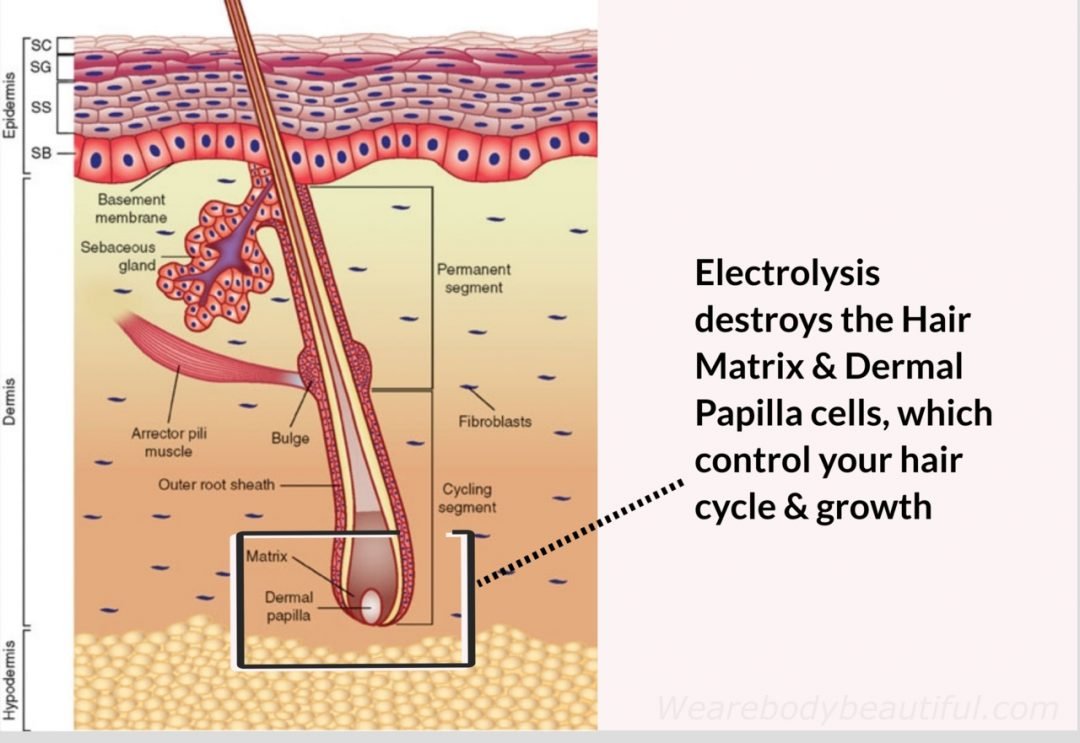
Let’s look at that now.
Electrolysis
Electrolysis is the process of permanently removing hair using electricity.
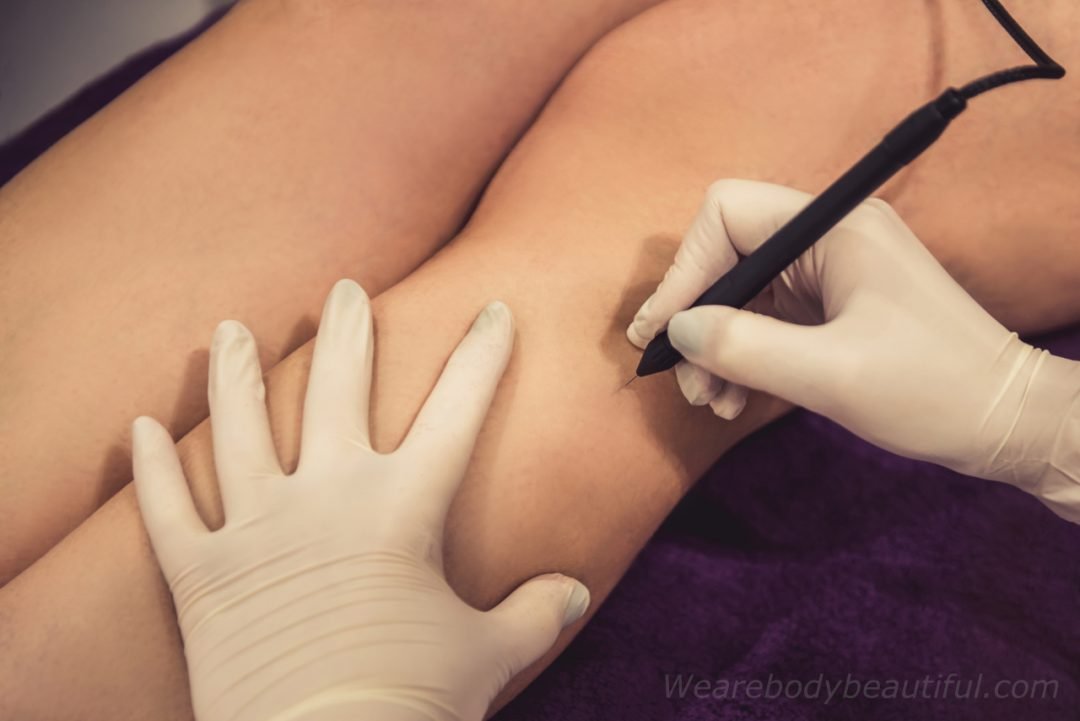
The operative slides a super-thin metal probe into your hair follicle, then delivers the electric current. The current destroys the dermal papilla area of your hair follicle. It can cause mild to significant discomfort. Minor side effects are slight redness, swelling and skin sensitivity. And it’s time consuming because you must treat one hair at a time. So, you’ll need several sessions to treat every hair follicle of a larger treatment area.
There are 3 types of electrolysis:
- Galvanic (direct current DC) electrolysis: kills the cells with Sodium Hydroxide formed through chemical electrolysis.
- Thermolysis (alternating current or AC): kills the cells with heat from a Radio Frequency current and is faster that DC current
- Combination/blend method: a bit of both
The results of electrolysis (in capable hands) are very good. It’s considered by aestheticians to give the best hair removal results. As such, electrolysis is recognised and approved by the FDA as a method of permanent hair removal. Although there’s nothing explicit on their website today, a few years back they stated:
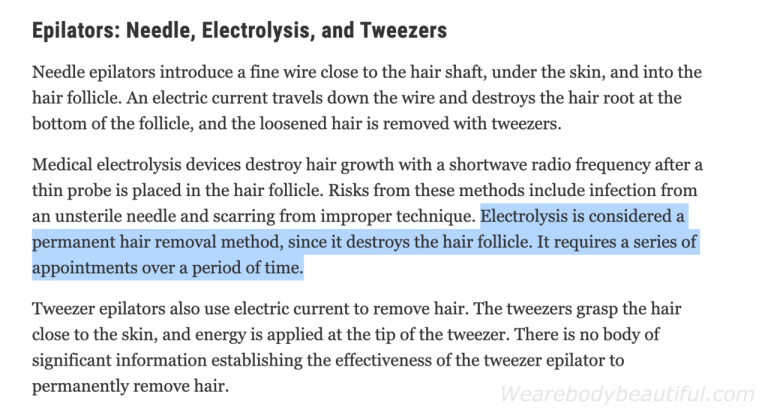
“Electrolysis is considered a permanent hair removal method, since it destroys the hair follicle. It requires a series of appointments over a period of time.”
FDA website, via Wayback machine
However, although electrolysis CAN permanently remove hairs, it’s not guaranteed. To achieve permanent hair removal you’ll need a very skilled operative to target the tiny, precise area in the hair follicle. You’ll also need several sessions over a period of time to treat all hairs. So, if you don’t stick to the treatment plan or choose the wrong clinic, it may not give you the forever-smooth you’re looking for.
Pros ✔️
- Permanent results on successfully treated follicles
- FDA approved
- Works on all hair colours including grey
- Safe on all skin colours
- Very good results in the hands of a skilled operative
Cons ❌
- It’s time consuming because each hair is zapped individually
- Could require many sessions on large areas or dense hair
- Can cause post-inflammatory hypo- or hyperpigmentation around the follicle
- It can hurt for some
- A risk of local infection if the probe is not properly cleaned
- Poor results and experience in the hands of an unskilled operative
So, how is laser and IPL hair removal different from this?
Why laser & IPL aren’t permanent hair removal
Laser and IPL energy does not work in the same way as electrolysis. And even with professional treatments, the sessions don’t always irreversibly destroy the dermal papilla and hair matrix.
This is how it works 👉…The powerful light energy works on actively growing hairs with lots of melanin-rich cells. It’s absorbed by this dark melanin pigment in our hairs. Then it converts to heat. This heat damages cells in several key areas of the hair follicle which are responsible for hair growth. The areas are the Dermal Papilla, the Hair matrix, Outer root sheath and the Bulge.
Here’s a rather pretty diagram:
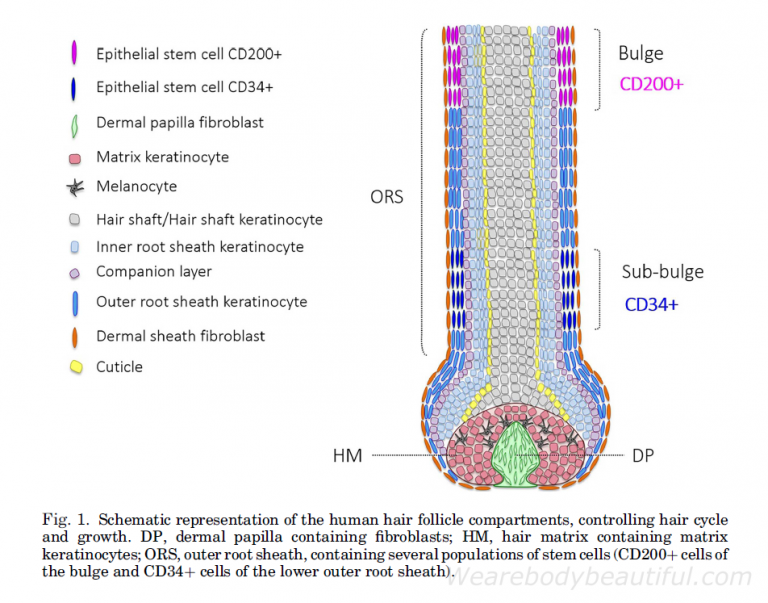
Once zapped, the hair follicle reacts by entering the dormant phase of the hair growth cycle.
This means most people see fast results with laser and IPL hair removal. After just the first session hair growth seems stunted, and then the hairs fall out around 2 weeks later. There’s a lot more detail about what happens to your hairs here.
You need a course of treatments, typically 8 to 10, to catch all hairs in the active growing stage (called Anagen). In many cases the damage done to the hair follicle is irreversible. And this means the hairs can’t regrow. However, in other cases the hair follicles can repair, reactivate and later start a new hair growth cycle. If this happens (and how long it takes) differs by individual. Professionals advise you may need yearly top-up session to maintain your smooth.
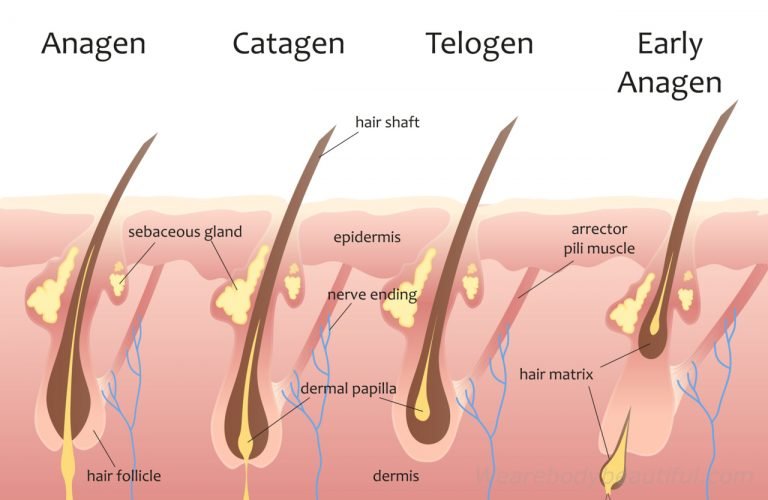
The clinical trials of laser and IPL hair removal show that some hairs do grow back during the course of the trial. This is why the FDA deemed “permanent hair reduction” a better way to describe the results you’ll get from laser and IPL hair removal.
What is permanent hair reduction?
The FDA (US Food and Drug Administration) coined the term “permanent hair reduction” in an attempt to curb over-enthusiastic marketing claims.

Here’s what it means:
“Permanent hair reduction is defined as the long-term, stable reduction in the number of hairs re-growing after a treatment regime, which may include several sessions”
FDA
They then explain what ‘stable reduction’ means…
“The number of hairs regrowing must be stable over time greater than the duration of the complete growth cycle of hair follicles, which varies from four to twelve months according to body location.”
FDA
If we take leg hair as an example, your hair growth cycle here takes around 12 months. That means you must see fewer hairs on your legs, which remains much the same, for 1 whole year after your treatments. But for your upper lip with a shorter growth cycle, it’d be consistently fewer hairs for around 6 months.
So, the word permanent is a bit misleading. It means a long-lasting several months, but does not mean forever.
The FDA goes on to say:
“Permanent hair reduction does not necessarily imply the elimination of all hairs in the treatment area.”
FDA
Therefore, the reduction means fewer hairs, and not necessarily ALL hairs. And, nope. There’s no agreed percentage for this hair reduction either.
Here’s a helpful quote to sum it up from the experts at ASLMS:
“In general, the goals of laser hair removal must be realistic. It is rare to see 100% total clearance of all treated hairs in this area. In general patients need to understand that the purpose of treatment is to decrease the amount and thickness of hair in the treated sites. Younger treated patients must also understand that they will continue to grow “new” hairs for decades. Thus periodic re-treatments will be required.”
American Society for Laser Medicine and Surgery
At-home permanent hair reduction?
Professional laser hair removal providers suggest at best you can get up to a 90% hair reduction after a course of treatments. That’s excellent, because these lasers are powerful and very efficient at damaging the key areas of your follicle.
But what about at-home devices?
It’s a little different.
In the US, if a brand claims ‘permanent hair reduction ‘or ‘permanent results’, they must be able to prove their devices meet the FDA definition of ‘permanent hair reduction’. Most manufacturers have clinical or user trials to prove this, and so they can use the word ‘permanent’ in various ways (but should never say “permanent hair removal”).
This is the wording on the 501K clearance summary for all FDA-cleared at-home devices. This example is from the Smoothskin Pure device summary:
“The SmoothSkin Pure Hair Removal Device is indicated for the removal of unwanted hair. The SmoothSkin Pure is also indicated for the permanent reduction in hair regrowth, defined as the long- term, stable reduction in the number of hairs regrowing when measured at 6, 9 and 12 months after the completion of a treatment regime.”
501K indications wording
In the UK, the FDA has no jurisdiction. However, the Advertising Standards Agency says:
“Marketers of hair removal products and devices should ensure that they hold robust clinical evidence for the efficacy of their product.”
ASA
So, most brands sensibly follow the lead from the FDA and advertise based on hair reduction results. However, Tria Beauty UK don’t, take a closer look at their claim here.
Hair reduction claims by brand
At-home brands use claims designed to hook you in and stand out from the competition. Their claims are the most impressive hair reduction percentages extracted from their clinical test data. But they’re not necessarily the hair reduction results at 6, 9, and 12 months, as per the FDA definition.
Here are the claims from the leading brands:

Smoothskin
“clinically proven hair reduction in 4 weeks”
“92% hair reduction after 4 weeks of treatment”

Silk’n
“up to 92.3%* hair reduction after six treatments with two weeks in between each session.”

Braun
“permanent hair reduction in 4 weeks”
“Hair-free in 4 weeks”

Sensica
“Enjoy permanently smooth & silky skin on your face and body”

Philips
“Up to 92% hair reduction in just 3 treatments”
[6 months after the last session, the] “Median result 78% hair reduction on legs, after 12 treatments”

Tria Beauty UK
“Tria reduces up to 70% of unwanted hair after just 2 treatments in as few as 3 months”
“Tria’s advanced hair removal devices offer a safe, at-home permanent hair removal solution, whereas IPL offers permanent hair reduction.”
With some brands, you’ll also find generic statements like “it gives permanent results” or “the results are permanent”. The full and helpful definition of this (i.e. the definition of permanent hair reduction) is often hidden in the small print, or tucked away in the FAQs section.
Therefore, the problem I see with these claims is that they don’t set accurate expectations about the actual effort required for long-term results with each of the devices.
Let’s look at this next.
So, what results can you expect?
All at-home laser and IPL devices recommend a start-up schedule to get smooth, then top-ups to stay that way. The start-up schedules range from 4 to 12 sessions. Many people see significant results after 4 to 6 sessions. So it doesn’t take most long to see results, whereas others need 2 or 3 times as long to match their results. It varies by individual. You can compare the treatment regimens by brand here.
Based on my tests and collated user feedback, this is an outline of typical hair reduction results during this stage:
- After 1 or 2 sessions you’ll still see hair growth. And hair doesn’t fall out immediately. Shave before your next session.
- After 2 to 4 sessions you should see less hair and smooth patches. Your hair is also finer and lighter, and easier to shave.
- After 3 to 6 sessions you should have large bald spots, very fine and light regrowth or even be totally smooth! You may not need to shave between sessions.
- After that continue as directed by the user manual either to complete the full regimen or start your maintenance phase with top-ups typically every 4 to 8 weeks.
And there’s one VERY IMPORTANT factor I can’t stress enough.
Your top-ups are extremely important!
A recent report into the long-term effects of at-home IPL hair removal shows that each session has a compound effect on your hairs creating incremental damage. So, the more top-ups you do, the longer lasting your results are. The report finds that if you continue top-ups every 6 weeks for 1 whole year, you’ll achieve high and long-lasting hair reduction (up to 85%) even 1 year after stopping the sessions. Learn more about this report here.
NOTE: for some people both professional and DIY laser / IPL hair removal simply doesn’t work. The reason why is not known. This small percentage of people are termed ‘non-responders’ and there’s usually a few among the user reviews who, despite using their machines continually for several months, don’t achieve their anticipated results.
Conclusion
To sum it up, laser and IPL won’t give you permanent hair removal. But it does give some of the best hair reduction results you can get.
The results from professional laser and IPL hair removal vary by individual. For those whose hair follicles are severely or irreversibly damaged, they get very long-lasting results. In some cases, hair doesn’t grow back for years, or decades, or decades-and-still-counting. But for others it’s a matter of months before their hair returns.
That’s why you can’t say laser and IPL is ‘permanent hair removal’ for everyone. ‘Permanent hair reduction’ is a better explanation (once you understand what it means!).
And for at-home devices won’t give you permanent hair removal either. It’s really important to have realistic expectations. If you don’t complete the start-up schedule AND several top-ups, it won’t be long before your hairs sprout again. Also, even if you do follow this guidance, you may need to continue with more regular top-ups to stay smooth. That’s because, just like professional laser and IPL, results vary by individual.
But if you’ll be happy with much less shaving and plucking, avoiding the agony of waxing and epilators, experiencing finer, softer, lighter and slower hair regrowth, AND you have the patience and dedication to get there, then you’ve probably already decided to give it a go!
The best at-home laser hair removal round-ups
Check out the recommended round-up below that best suits your needs:
References & Sources:
https://en.wikipedia.org/wiki/Electrology
https://www.skintherapyletter.com/dermatology/hair-removal-practices/
https://www.serenityskininc.com/blog/2015/5/1/pros-and-cons-of-electrolysis
https://althealthassociates.com/services/electrolysis/how-does-electrolysis-work-alexandria-va/
https://www.asa.org.uk/advice-online/hair-hair-removal.html
https://www.sknclinics.co.uk/treatments-and-pricing/laser-hair-removal

